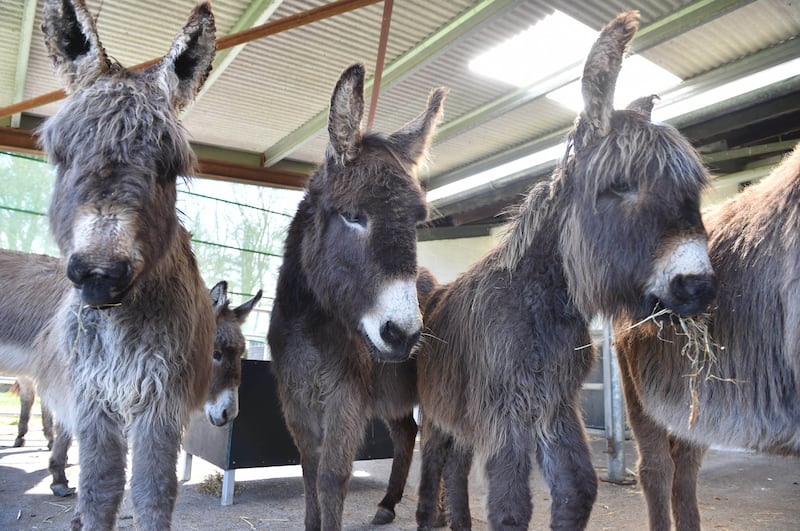After a two-hour cross-country journey last week, four pregnant mares and three foals were carefully unloaded and led into Donkey Sanctuary Ireland in Cork. They would be the last.
Long neglected, the animals spent their first night on a straw bed under shelter. They had their hooves trimmed, received veterinary care and will eventually be given names. But for the foreseeable future they are the final intake at the sanctuary, which opened in the 1980s.
“That’s the really, really tough message,” says director Laura Foster. “It doesn’t mean that we won’t be as busy as ever. It doesn’t mean that we will be shutting our doors.”
Due to a complex build-up of Celtic Tiger-era donkey popularity, a general lack of welfare and depleting charity resources, space at the country’s largest donkey sanctuary has simply run out.
READ MORE
The sanctuary introduced limitations on intake two years ago to the most vulnerable animals but now it has finally reached its limit. It currently cares for about 1,700 donkeys on its own lands and in guardian homes and employs 90 staff.
The final seven donkeys were rescued from a property in Galway last Thursday. They hope to rehome another eight that remained behind. Four had to be euthanised. The carcass of another lay nearby.
There was nothing particularly exceptional about the Galway rescue, other than it marks a milestone in the sanctuary’s increasing inability to address a deepening problem.
“We had a massive surge in relinquishments, really off the back of the Celtic Tiger collapse,” explains Foster. “When the economy was strong people decided to have donkeys and that popularity waned with the crash. We always say that when humans suffer, animals suffer.”
In 2015 alone, the sanctuary took in about 500 animals.
Data from the Central Statistics Office (CSO) shows mules, jennets (a female donkey) and asses numbered 126,000 in 1847, rising steadily to a peak of about 278,000 by 1911 and dwindling thereafter to about 114,000 by the mid-20th century.

In a 2014 paper, Queen’s University Belfast academic Jim Smyth noted that, decades after their replacement by tractors, the donkey remained an Irish icon “flexible enough to serve a variety of interests”.
As the human population plummeted in the 19th century, donkey numbers went in the other direction.
“The rise in the donkey population can probably be attributed to economic and social changes brought about by the Great Famine,” Smyth noted.
In more recent times the image of donkeys has seen something of a boost in popular culture, notably through the lens of recent high-profile movies. Colin Farrell’s delight at seeing a donkey resembling his co-star Jenny led out at the recent Academy Awards was met with a note of caution from the donkey sanctuary, which disapproves of their use in live entertainment.
“As films like The Banshees of Inisherin and EO portray donkeys as beloved, kind, and deserving creatures, we hope that they will advocate for better donkey welfare for all donkeys worldwide,” it said in a statement issued after the ceremony.
Foster explains that current donkey numbers are difficult to determine, as many are not chipped, registered or counted. According to the central equine database operated by the Department of Agriculture, just 1,750 donkeys were listed as alive in 2023.
But, she says, there is a need for improved awareness and enforcement, particularly around breeding, that would help ensure charities were not faced with an insurmountable challenge.
“If we don’t see some really strong collaboration and decisive action by everybody in the equestrian system this is not a problem that is going to go away any time soon.”












